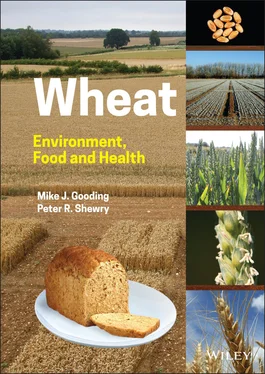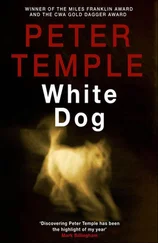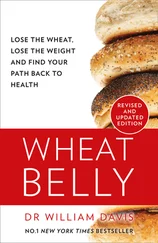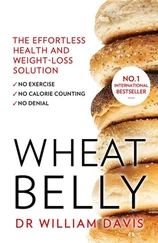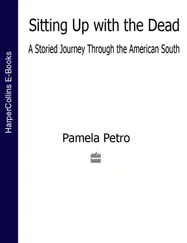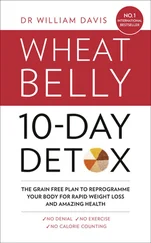Wiley also publishes its books in a variety of electronic formats and by print‐on‐demand. Some content that appears in standard print versions of this book may not be available in other formats.
Limit of Liability/Disclaimer of Warranty The contents of this work are intended to further general scientific research, understanding, and discussion only and are not intended and should not be relied upon as recommending or promoting scientific method, diagnosis, or treatment by physicians for any particular patient. In view of ongoing research, equipment modifications, changes in governmental regulations, and the constant flow of information relating to the use of medicines, equipment, and devices, the reader is urged to review and evaluate the information provided in the package insert or instructions for each medicine, equipment, or device for, among other things, any changes in the instructions or indication of usage and for added warnings and precautions. While the publisher and authors have used their best efforts in preparing this work, they make no representations or warranties with respect to the accuracy or completeness of the contents of this work and specifically disclaim all warranties, including without limitation any implied warranties of merchantability or fitness for a particular purpose. No warranty may be created or extended by sales representatives, written sales materials or promotional statements for this work. The fact that an organization, website, or product is referred to in this work as a citation and/or potential source of further information does not mean that the publisher and authors endorse the information or services the organization, website, or product may provide or recommendations it may make. This work is sold with the understanding that the publisher is not engaged in rendering professional services. The advice and strategies contained herein may not be suitable for your situation. You should consult with a specialist where appropriate. Further, readers should be aware that websites listed in this work may have changed or disappeared between when this work was written and when it is read. Neither the publisher nor authors shall be liable for any loss of profit or any other commercial damages, including but not limited to special, incidental, consequential, or other damages.
Library of Congress Cataloging‐in‐Publication Data
Names: Gooding, Mike J., author. | Shewry, Peter R., author.
Title: Wheat : environment, food and health / Mike J. Gooding, Aberystwyth University, Aberystwyth, UK, Peter R. Shewry, Rothamsted Research, Harpenden, UK & University of Reading, Reading, UK.
Description: Hoboken, NJ : Wiley, 2022. | Includes bibliographical references and index.
Identifiers: LCCN 2021046095 (print) | LCCN 2021046096 (ebook) | ISBN 9781119652557 (hardback) | ISBN 9781119652588 (adobe pdf) | ISBN 9781119652595 (epub)
Subjects: LCSH: Wheat. | Wheat–History. | Wheat trade–History.
Classification: LCC SB191.W5 G665 2021 (print) | LCC SB191.W5 (ebook) | DDC 633.1/1–dc23
LC record available at https://lccn.loc.gov/2021046095LC ebook record available at https://lccn.loc.gov/2021046096
Cover Design: Wiley
Cover Images: Courtesy of Richard Casebow, Crops Research Unit, University of Reading, UK; Courtesy of Mike Gooding; Courtesy of Rothamsted Research Ltd
We would like to dedicate this volume to our friends and colleagues Prof. W. Paul Davies (1949–2016) and Dr. Donald D. Kasarda (1933–2021).
Wheat was one of the first cereals to be domesticated and it is now produced on over 700 million hectares globally, making it the most widely grown crop worldwide. This is attributable to its wide adaptability across climate and elevation ranges, as well as its central contribution to human diets. The energy‐rich grain is also the major vegetable protein source in human diets and, alongside maize and rice, the cereal staples underpin food and nutrition security. Importantly, wheat grain can be stored and processed into a diverse range of end products.
The versatility of wheat as both a field crop and as a grain commodity make it unique. There are many strands of knowledge, research, and breeding that have contributed to the wheat that is grown around the world today. Many features are covered in this book, including the major facets of wheat production (soils, water, temperature, sunshine), the optimal characteristics and management of the canopy to deliver harvestable outputs, and the wheat grain itself. A wealth of information describes the structure, development, and composition and quality for processing and health of wheat grain, all vital for its versatility as a food and feedstuff. Finally, the genetic improvement of wheat continues apace. Much recent innovation has uncovered previously intractable aspects of the wheat genome and we see accelerated progress in understanding genetic improvement. This expertly assembled book brings together a wealth of knowledge on wheat production and processing along with the exciting prospects of modern wheat breeding methods. The increasing global population and climate change threats necessitate our use of the synthesis of this information in continuing to breed and produce the wheat of the future.
Dr. Alison Bentley
Director, Global Wheat Program, CIMMYT
We have studied wheat for many years and benefitted greatly from discussions and collaborations with colleagues in our UK institutions (University of Reading, Harper Adams University, Royal Agricultural University, IBERS/University of Aberystwyth, Rothamsted Research, and Long Ashton Research Station/University of Bristol), in other UK bodies (universities, research institutes, and industry), and internationally. These people are too many to list individually!
We are grateful to Dr. Keith Goulding (Rothamsted Research) and Dr. Simon Griffiths (John Innes Centre, Norwich, UK) for their constructive comments on the text relating to soils and the environment and to genetic improvement, respectively. We thank VSN International Ltd. for the use of Genstat for data analysis throughout this book. We are also grateful to a number of colleagues who have provided advice, figures or datasets: Dr. Frederic Beaudoin, Dr. Yongfang Wan, Dr. Alison Lovegrove, Dr. Cristina Sanchis‐Gritsch, Dr. Andy Neal, Margaret Glendining (all Rothamsted Research), Dr. Brittany Hazard (Quadram Institute Bioscience, Norwich), Prof. Filiz Koksel (University of Manitoba, Canada), Dr. Paola Tosi (University of Reading, UK), Dr. Katy Moore (University of Manchester, UK), Dr. Simon Berry (Limagrain UK Ltd.), Dr. Louise Wells (ATC, Maidenhead, UK), Professor Marie Sofie Møller (DTU, Lyngby, Denmark), and Dr. Ellen F. Mosleth (Nofima, Ås, Norway).
Finally, would like to thank Sue Steele (Rothamsted Research) and Ruth Gooding for their help throughout the project.
1 Wheat and Humans: An Introduction to the Development and Utilisation of the Wheat Crop
Nobody is qualified to become a statesman who is entirely ignorant of the problem of wheat.
Socrates
1.1 Wheat Production in the Past and Present
1.1.1 Co‐Evolution of Wheat Production and Human Societies
The wheat story is one of growing mutual reliance between a remarkable mammal, us ( Homo sapiens sapiens ), and a remarkable group of grain‐bearing grasses, the wheats ( Triticum spp.). This relationship has affected our societal development and the way we spend our lives. At the same time, we have manipulated wheat plants to our own designs: the domesticated types of wheat grown by farmers fail to establish and flourish in the wild. The most widely grown wheat species, Triticum aestivum , appears never to have existed outside of cultivation.
Читать дальше
